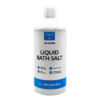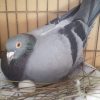Paramyxovirus (PMV) in Racing Pigeons and Essential Guide Symptoms, Prevention, and Treatment
When it comes to pigeon racing, every detail counts—from breeding and training to loft hygiene and nutrition. But one area that can make or break your race season is disease prevention, especially against highly contagious viruses like Paramyxovirus (PMV).
PMV is one of the most feared viral diseases in the racing pigeon world. It’s fast-spreading, highly contagious, and can cause devastating losses in a loft. In this blog post, we’ll explore everything you need to know about PMV: what it is, how it spreads, symptoms to watch for, how to prevent it, and what to do if your pigeons are infected.
What is Paramyxovirus (PMV)?
Paramyxovirus, often abbreviated as PMV, is a viral disease caused by the Avian Paramyxovirus Type 1 (APMV-1). It primarily affects the nervous and digestive systems of pigeons. PMV can strike any pigeon loft, regardless of size or geography, making it a global concern among pigeon fanciers.
This virus is not just dangerous because of its health impact—it’s also persistent in the environment and can spread quickly from one bird to another. Racing pigeons are particularly vulnerable due to their frequent exposure to other birds during transport and races.
How PMV Spreads
Understanding how PMV spreads is key to preventing an outbreak. The virus is mainly transmitted through:
- Feces and contaminated droppings
- Saliva and nasal discharge
- Contaminated water or feed sources
- Shared transport baskets and race crates
Once a pigeon is infected, it can shed the virus for weeks, putting the entire loft at risk. Contaminated loft equipment, clothing, and even human hands can serve as carriers.
Recognizing PMV Symptoms
One of the first steps in effective disease management is recognizing early signs. PMV affects pigeons differently depending on their age and immune response. Symptoms often appear 7 to 10 days after exposure. Common signs include:
Neurological Symptoms:
- Twisted necks or heads (torticollis)
- Inability to fly or maintain balance
- Trembling or uncontrolled movements
Digestive Symptoms:
- Excessive drinking
- Wet droppings (diarrhea)
- Undigested seeds in droppings
General Symptoms:
- Loss of appetite
- Weight loss
- Depression and lethargy
Even if only a few birds show symptoms, the entire loft should be treated with caution. Some birds can be asymptomatic carriers.
PMV vs. Other Diseases
PMV is often confused with other pigeon diseases like E. coli or Salmonella (Paratyphoid) because of overlapping symptoms such as diarrhea or lethargy. However, the key distinguishing feature of PMV is its neurological symptoms. If your pigeon is tilting its head, spinning in circles, or struggling to perch, PMV should be a prime suspect.
Diagnostic lab testing is the most reliable way to confirm PMV, especially when symptoms are ambiguous.
The Importance of Vaccination
The good news? PMV is preventable. The most effective way to protect your flock is through timely vaccination. This is the cornerstone of disease prevention for racing pigeons.
Recommended PMV Vaccines:
- PMV Vaccine (injectable)
- Pox Vaccine (combined protection)
Vaccination Tips:
- Start early: Vaccinate young birds at 4 to 6 weeks of age.
- Revaccinate annually, ideally 6 weeks before racing season.
- Always record vaccination dates and keep your loft on a set schedule.
Remember, PMV vaccines are not a treatment—they are a preventative measure. They must be administered before exposure to the virus to be effective.
What to Do During an Outbreak
If PMV has already entered your loft, it’s important to act quickly to minimize its impact. Although there is no cure for PMV, supportive care can help infected pigeons recover and prevent secondary infections.
Steps to Manage an Outbreak:
- Isolate symptomatic birds to limit spread.
- Keep the loft dry and clean at all times.
- Provide electrolytes and multivitamins to support weakened birds.
- Hand-feed severely affected pigeons that can’t eat on their own.
- Disinfect everything: Clean waterers, feeders, perches, and transport baskets daily.
Medications like Baytril or Cipro may be prescribed by veterinarians to prevent secondary bacterial infections.
Biosecurity: Your Best Defense
In addition to vaccination, maintaining strict biosecurity is essential in keeping PMV and other diseases at bay. Here’s how you can strengthen your loft defenses:
- Quarantine new birds for at least 2 weeks.
- Avoid mixing pigeons from different lofts without prior health checks.
- Use footbaths and hand sanitizers when entering the loft.
- Limit visitors to your pigeon area.
- Clean and disinfect race baskets after every use.
Nutrition and Immune Support
A healthy immune system can make all the difference. Providing a balanced diet with immune-supporting supplements is essential. Products containing vitamin C, electrolytes, and probiotics help birds recover faster and reduce the risk of secondary infections.
Some recommended products for immune support include:
- Ascorbivite – Soluble source of Vitamin C
- Carbosol – For energy and recovery
- Jaap Koehoorn Electrolyte+ – Electrolytes, amino acids, and vitamins
These supplements can be especially helpful during times of stress or when your birds are recovering from illness.
Final Thoughts
Paramyxovirus is a serious threat to racing pigeons, but with the right approach, you can protect your loft and maintain peak performance throughout the season. The keys are early vaccination, strict hygiene, biosecurity, and proactive care.
By understanding the nature of PMV and taking consistent preventative measures, pigeon fanciers can avoid the heartbreak of watching their best racers succumb to illness. Don’t wait until symptoms show up—plan, vaccinate, and be vigilant.
Your pigeons depend on you to keep them healthy and race-ready. Let PMV stop at the gate, not in your loft.


